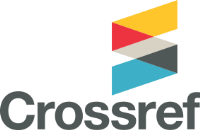МОРФОЛОГІЧНА СТРУКТУРА АНГЛІЙСЬКИХ ТА УКРАЇНСЬКИХ РЕКЛАМНИХ ТЕКСТІВ ТОНІЗУВАЛЬНИХ НАПОЇВ: ПОРІВНЯЛЬНЕ КВАНТИТАТИВНЕ ДОСЛІДЖЕННЯ
DOI:
https://doi.org/10.32782/philspu/2025.10.5Ключові слова:
рекламний текст, корпусний підхід, вирівняний паралельний корпус, розподіл частин мови, стратегії перекладуАнотація
Стаття присвячена дослідженню морфологічного рівня англомовних рекламних текстів тонізувальних напоїв в оригіналі та перекладі на основі корпуснобазованого підходу. Побудовано дослідницький паралельний корпус, проведено його структурне та частиномовне маркування, з’ясовано частоту вживання частин мови з високим стилерозрізнювальним потенціалом.Здійснено лінгвостатистичний порівняльний аналіз підкорпусів оригіналу та перекладу. Виявлено значну розбіжність між загальними квантитативними характеристиками англійськомовних та українськомовних рекламних текстів, що дозволяє констатувати лише часткову квантитативну еквівалентність оригіналу та перекладу на основі загальних показників корпусу. Така тенденція пояснюється застосуванням таких перекладацьких стратегій, як локалізація та транскреація. У ході морфологічного аналізу дібраних рекламних текстів тонізувальних напоїв виявлено істотні відмінності у вживанні частин мови, і у текстах (слововживання), і у реєстрах словників (леми). Як в тексті оригіналу, так і в тексті перекладу зафіксовано найвищу частотність вживання іменників, що пов’язано з функцією номінації, переважання дієслів дії, широке використання прикметників і прислівників позитивно-оцінної семантики, використання займенників, завдяки чому розв’язується завдання персоніфікації звернення. В текстах рекламних повідомлень про тонізуючі напої зафіксовано переважання іменників, що зумовлює номінальний стиль викладу, дещо статичний та описовий, об’єктивний лексичний фон, підтверджений високим ступенем номінальності, який був збережений при перекладі. Таким чином реалізується інформативна стратегія побудови рекламного повідомлення, яке розраховане на широке коло споживачів. Ця стратегії покликана впливати на адресата через інформацію, апелювати до його інтересів, оскільки для більшості споживачів саме інформативність реклами є причиною звернення до неї.
Посилання
Арешенкова О. Комунікативно-прагматичні та стилістичні параметри рекламного тексту : монографія. Кривий Ріг, 2018. 176 с.
Безугла Т. А. Англо- і німецькомовний рекламний дискурс: Полікодовий лінгвопрагматичний підхід : дис… канд. філол. наук : 10.02.04. Харків, 2017. 304 с.
Мачульська К. Я. Лінгвопрагматика комерційних гасел в англомовному інтернет-дискурсі реклами : дис. … канд. філол. наук : 10.02.04. Запоріжжя, 2020. 294 с.
Garfield B. And Now a Few Words From Me : Advertising's Leading Critic Lays Down the Law, Once and For All. New York : McGraw Hill, 2006. 244 с.
Özdil U., Arslan B., Taşar D. E., Polat G., Ozan Ş. Ad text classification with bidirectional encoder representations. Proceedings of the 2021 6th International Conference on Computer Science and Engineering (UBMK), 15–17 вересня 2021 р., Ankara, Turkey. Ankara, 2021. С. 169–173. DOI: 10.1109/UBMK52708.2021.9558966.
Beaizak M. Bild und Text in der Anzeigewerbung. Eine kontrastivinterkulturelle Studie anhand von deutschen und arabischen Werbeanzeigen. Frankfurt/M. : Lang, 2012. 337 с.
Добровольська Д. М. Мовні особливості англомовних рекламних слоганів та їх відтворення українською і російською мовами : дис. … канд. філол. наук : 10.02.16. Одеса, 2017. 226 с.
Чернюх Л. Д. Теоретичні аспекти дослідження реклами (на матеріалі словацької та української мов). Компаративні дослідження слов’янських мов і літератур. Пам’яті академіка Леоніда Булаховського. 2011. Вип. 15. С. 281–287.
Torresi I. Translating Promotional and Advertising Texts. New York : Routledge, 2021. 176 с.
Faber Benitez B. P. The translation of advertising texts in culturally-distant languages : the case of Spanish and Arabic // International Journal of Translation. 2012. Т. 24, № 1–2. С. 51–64.
Селіванова О. Сучасна лінгвістика: термінологічна енциклопедія. Полтава: Довкілля-К, 2006. 716 с.
InterText Editor. URL : https://aclanthology.org/L14-1258/
AntConc: A freeware corpus analysis toolkit for concordancing and text analysis. URL : https://www.laurenceanthony.net/software/antconc/
Chesterman A. Beyond the particular. Translation universals. Do they exist? Amsterdam : John Benjamins Publishing Company, 2004. С. 33–49.
Городецька І. Англійськомовний рекламний текст косметичних засобів: структура, семантика, прагматика : дис. ... канд. філол. наук. Чернівці : Чернівецький нац. ун-т ім. Ю. Федьковича, 2015. 213 с.
Kokemuller N. The most-frequent adjectives used in advertising. Demand Media. Texas : Houston Chronicle URL : http://smallbusiness.chron.com/mostfrequent-adjectives-used-advertising-64928.html
Quensheng K. The adjective frequency in advertising English slogans. Theory and Practice in Language Studies. London : Academy Publication Co., 2013. Vol. 3. С. 275–284.
##submission.downloads##
Опубліковано
Номер
Розділ
Ліцензія

Ця робота ліцензується відповідно до Creative Commons Attribution 4.0 International License.







